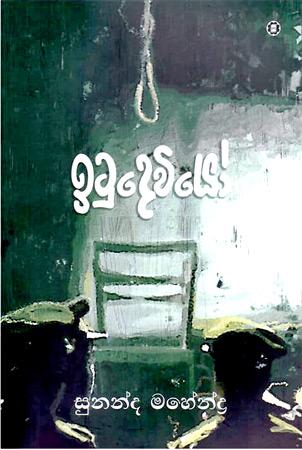
Title: Itu Deviyo
Author: Sunanda Mahendra
Genre: Novel
Publisher: Sarasavi Publishers
Reviewed by Dr Vidhura Subash
In a somewhat fear struck period with the pandemic, perhaps there is little comfort for solace. We have heard a number of horror stories related to the First and the Second world wars. Many poems, books and films have since evolved reminiscing to such events.
To add to these scenarios was the Spanish flu one hundred years ago that took many lives for three years from 1918 to 1920 just like the present Covid pandemic. Some of these events and stories may still linger and create vivid imaginations within ourselves. On thecontrary to fear-stricken psychosis one might see the aspirational or the beautiful facets in some rare jovial events or incidents during these days. These beautiful little incidents or moments in life may be considered as coincidental, Karmic or God given according to people’s beliefs. Like these events comes out the strikingly portrayed tale of ‘Itu Deviyo’.
Subtle tale
Professor Sunanda Mahendra’s most recent novel clearly exudes a subtle tale of events that are believed to have occurred during the Second World War in semi-urban Sri Lanka or better known as Ceylon then. The protagonist Nandasiri, a blossoming youngster is full of investigative ideas or whodunnit to unravel the mysterious story of his uncle’s paradigm on an alleged charge for manslaughter. The imperative disaster has impacted him and his family to greater complexities.
The charges seem somewhat implausible to a man of his uncle’s stratum who happens to have developed a well-read echelon thus would not embark on common broils. The events are slowly unfolding during and the post-Second world war period hence the country is still very much colonial oriented. The ingrained middle-class values of reading, writing and literature are of norm and well heeded. On the contrary the family feuds and the collapses of integrated etiquettes and values are also discussed to some depth.
Two key layers
Author Mahendra has developed two key layers to his narrative. Firstly, young Nandasiri who has a strong affection towards his uncle seeks for clear solutions for the said charges that are levied upon him. He embarks on investigating his uncle’s literary works for clues by reading personal notes, poems and memoirs that were accidently found dated and documented in his father’s office room. How did such a plethora of notes be sitting underneath this office room? Could he have killed someone, perhaps there are hidden clues in those notes and memoirs? Queries Nandasiri.
The notes written by his uncle may provide ample evidence for his ultimate destiny – gallows or otherwise? Nandasiri subsequently begins a strong yet stealthy relationship by visiting the office room premises and reading for even more clues determining to solve the mystery. He vies with time to seek sanctity among those findings so just to be in this recently found rendezvous. These scenes have just created a mini painting of ‘the bedroom’ by the Dutch post-impressionist Vincent van Gogh. He would not feel that time flies.
As a result, Nandasiri finds himself increasingly in the doldrums, perhaps confronting reluctantly of his own conscience to reveal the findings in front of his parents that may perhaps be immoral or irrelevant or a bit of both.
Possibly there is a generation gap that he thinks he would scarcely get the message across. Secondly, he feels as if these findings were now of a treasure trove to seek his own pathway to greater heights thus his own artistic desires let alone exploring solutions for his uncle’s knowhow
. To this end he engages with his mother and widens his quest further along, pursuing his own set of skill sets in writing poems and memoirs – a potential mini collection of poems.
Features
The novel does have a fine flow and accentuates the poetic aspect of certain events. Sometimes they contain an old Sinhala song, a Buddhist script of spiritual magnitude or a piece of literature from an old poet which the reader may enjoy by going down the memory lane with some yesteryear entertainment in mind. Some of the minor events depict the author’s elegant memories of once upon a time.
He fondly reminds us of the times of playing a game of ‘Snakes and ladders’ and attributes it to life’s rise and fall at times. Is it the debacle of a great culture? (Or a mere fallacy?).Additionally, the plot contains a coherent socio-political stratum that ultimately ends in affording a justifiable verdict to the victimised party of the protagonist– Nandasiri’s uncle. This is not one’s typical crime fiction – it is quite the contrary – perhaps a spiritual look at a scene of crime intertwined with a solid punch of fistful imagination to draw a different dimension to it.
Albeit the main story ends there, in comes another tiny twisting the tale (Agatha Christie would have been fond of it too) to the protagonist Nandasiri, the reader is cordially invited to extend his interest a tad more by the author. What is that?
This may be the apex where Nandasiri has come of age by publishing his maiden collection of poetry and winning the school’s competition thus have embarked on an academic success thanks largely to his own expedition in truth seeking for his uncle, association of good teachers and several encounters with his diligent mother.
A secret kept beneath in his father’s office room, yet Nandasiri strode to success with a stroke of luck. A truly happy ending from somewhat NOT so a happy beginning
